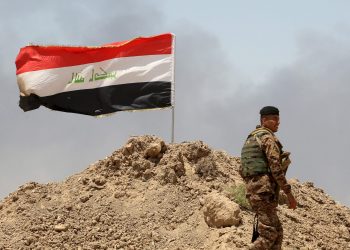US Army, SEOUL, South Korea: Military transformation on the Korean Peninsula is not just a U.S. program; the South Koreans are also very involved, the top military commander of combined forces here said this week.
Initiatives have allowed military forces to increase capabilities even as numbers decrease, Army Gen. Leon J. LaPorte said during an interview.
Driving the combined forces command transformation is the need to confront the threats of the future and not the world of the 1950s and 1960s, LaPorte said. The program is based on enhancing, shaping and aligning the force.
In the past three years, American and Korean officials have identified more than 300 enhancements to weapon systems, weapon platforms, intelligence platforms, and command-and-control systems, LaPorte said.
The Republic of Korea has bought fully into the military changes. Koreans will assume responsibility for two-thirds of the improvements. These enhancements signal one large change in the military relationship: tremendous improvements in the 645,000-man South Korean military, LaPorte said.
Efforts to shape the combined force continue. “The Koreans are changing their force composition, and they are making adjustments to their organizational structures, and so are we,” LaPorte said.
The U.S. will reduce its forces in Korea from 37,500 to 25,000 by 2008. “That is in total agreement with the Republic of Korea,” LaPorte said. “They're developing a plan to reduce their forces by (40,000) to 50,000 in the same timeframe.”
North Korea continues to threaten the peace in Northwest Asia. Yet the alliance continues to defend against such a threat even while reducing numbers. “You can do that because we're getting tremendous returns on investment from the capital investments we made in enhancements,” LaPorte said.
Both U.S. and South Korean forces use precision-guided munitions and capable intelligence platforms, and overall the nations have better weapon systems and better communications than North Korea. “So we're able to not only accomplish our current mission, but increase our capabilities,” LaPorte said. “At the same time, (we're) reducing the number of personnel it takes to do this.”
LaPorte stressed that reductions in U.S. personnel do not mean the U.S. is lessening its commitment to the Republic of Korea. “The Koreans fully understand that,” he said. They also understand that between 2003 and 2006, the United States appropriated $11 billion directly related to the security of South Korea. This includes forces on the peninsula and regional forces based in Japan, Guam, Hawaii and Alaska.
Reinforcement is a large part of the U.S. strategy on the Korean Peninsula. “We have increased our pre-positioned sets of equipment, so we can easily bring forces from the region or from the continental United States,” LaPorte said. “It is very easy for us to bring back additional combat forces (if needed).”
The U.S. is also transferring missions to South Korean forces, which further helps reshape the forces in Korea. “Perhaps 10 or 15 years ago, (these missions) required U.S. military assistance; today, they don't,” LaPorte said.
Examples of the missions transferred include providing security for the truce village of Panmunjom, the counterfire mission that has moved from the U.S. 2nd Infantry Division to Korea's 3rd Army, and weather forecasting.
“There were 10 missions that we agreed to,” LaPorte said. “So by allowing the Republic of Korea military to do these missions, it allows us to reduce the number of personnel that we have full-time on the peninsula.”
Iraq accuses Israel of seeking pretext for future attack
Iraq has accused Israel of attempting to legitimize an attack on its territory, after the Israeli foreign ministry protested to...









